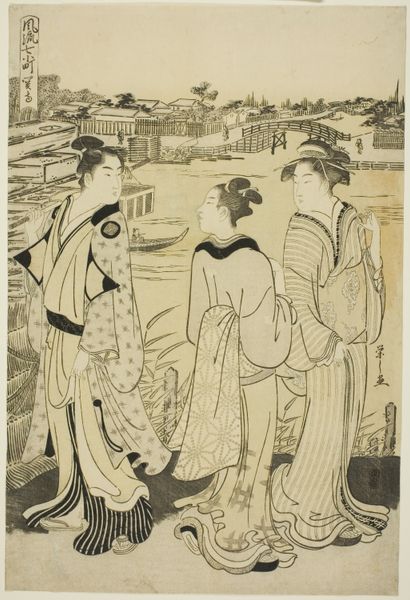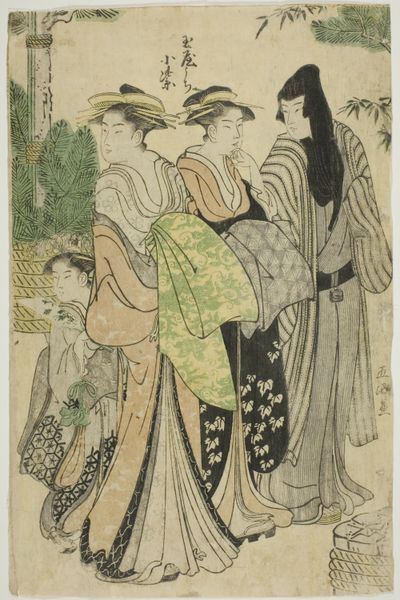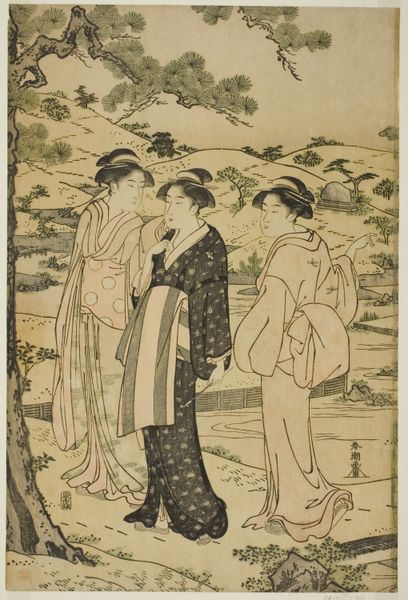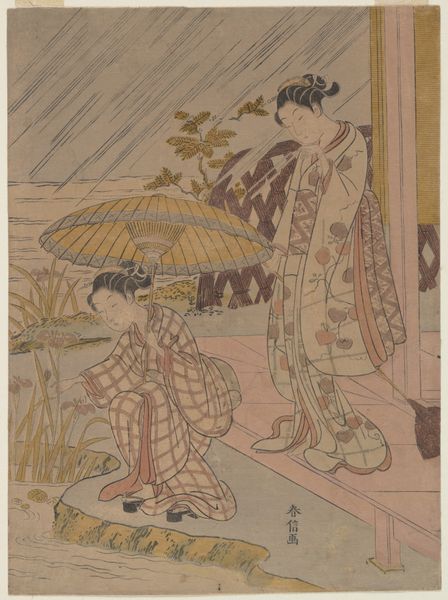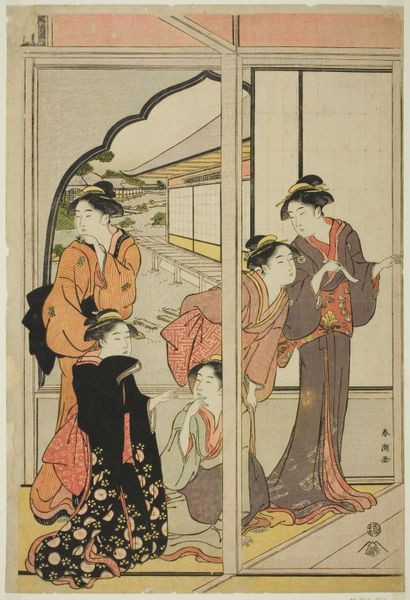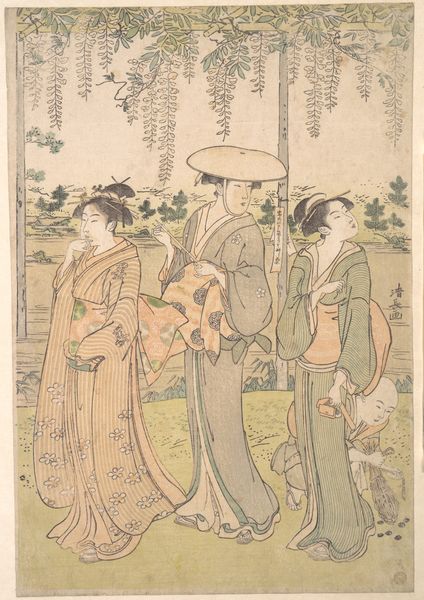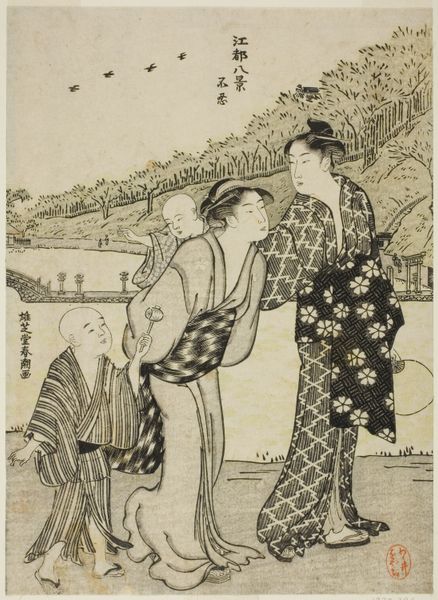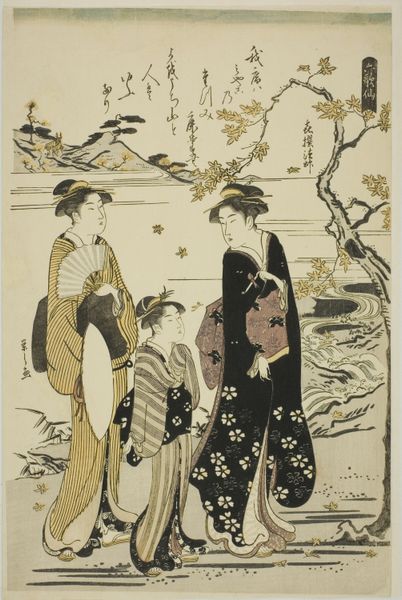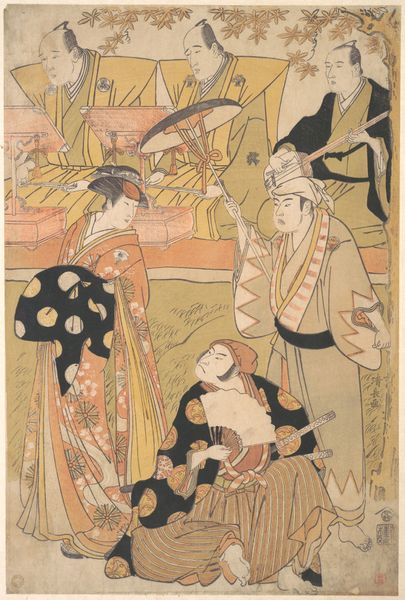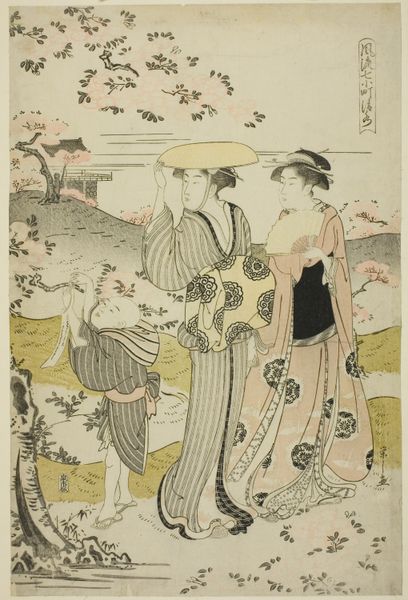
print, woodblock-print
#
portrait
# print
#
asian-art
#
ukiyo-e
#
figuration
#
historical fashion
#
woodblock-print
#
genre-painting
Dimensions: height 384 mm, width 260 mm
Copyright: Rijks Museum: Open Domain
Editor: This is "Three Women Walking by the Lake" by Hosoda Eishi, a woodblock print created between 1793 and 1797. I’m immediately drawn to the elegant lines of the kimonos and the figures’ graceful postures. How does the choice of this medium, this specific printmaking process, impact our understanding of the piece? Curator: Well, focusing on the materiality, we can see that woodblock printing allowed for mass production, bringing art to a wider audience beyond the elite. How do you think that affected the subjects chosen for these prints? Editor: I imagine it democratized art in a way. Did this wider availability affect how women, especially those depicted here, were perceived or consumed as images? Curator: Absolutely. Consider the labor involved: the artist, the carver, the printer – each contributing to the final product. These weren’t unique paintings but crafted multiples reflecting and shaping social values related to femininity and leisure. How do you read their clothing and setting in terms of status or societal roles? Editor: The detailed patterns and refined hairstyles suggest a certain level of affluence. I wonder if the commercial nature of these prints further commodified women’s images and identities? Curator: Exactly. This form allowed images of idealized womanhood to be circulated, shaping perceptions and potentially fueling consumerism. This isn't just a snapshot of reality; it's a product within a specific social and economic framework. What have you learned thinking about it from this materialist lens? Editor: I hadn't really considered how the printmaking process itself impacted the content and the cultural context, but it is essential to understand the production as a reflection of the cultural and economic environment of the time. Curator: Right! By analyzing the material conditions, we uncover a richer, more nuanced understanding.
Comments
No comments
Be the first to comment and join the conversation on the ultimate creative platform.
